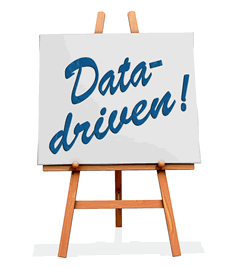 The days when marketers could make decisions solely based on intuition or gut feeling are over. Nowadays, they must measure everything that matters from the perspective of return and certainly the perspective of the customer. They must base or, at least support, their decisions on data and on prognoses backed up by numbers.
The days when marketers could make decisions solely based on intuition or gut feeling are over. Nowadays, they must measure everything that matters from the perspective of return and certainly the perspective of the customer. They must base or, at least support, their decisions on data and on prognoses backed up by numbers.
Marketers have a responsibility in the broader customer-centric context and that responsibility includes measurement without which optimization of the customer experience or the enablement of tasks customers want to fulfil is impossible.
What goes for marketing, goes for other business functions as well. A good customer service department or contact center, for instance, is data-driven and goes for a mix of data and metrics that enable to move beyond the single customer view and focus on the customer experience and service level, rather than transactional metrics. Without a good data-driven customer view, actions can’t be taken to serve the customer fast, accurately and plain good.
The link between data, ROI and the customer
The ROI of marketing is being monitored more often. Even though this is a good evolution, it shouldn’t stand in the way of creativity, innovation, and taking (controlled) risks.
It’s a fear many have but, when implemented properly and used in the right way, the use of marketing ROI or ROMI is not the end of the essence of marketing in the emotional, human and branding context.

On the contrary. As marketing ROI expert and author Jim Lenskold explains very well in his book on the topic, using ROI as a way to forecast actions can help gain buy-in for actions where the outcomes are hard to predict. If we know where ROI is proven, high and very likely to be high again, we can complement our marketing approach with activities where we “try” to forecast but have far less certainty. However, that uncertainty (it can be better or worse than “hoped”) is taken into account in the broader marketing picture, revolving around the creation of value for the customer and this the business.
Data-driven does not equal emotionless
Nevertheless, the focus on data-driven marketing shouldn’t be an excuse to quit practicing activities which are more difficult to calculate, such as community marketing, engaging in conversations with customers through social and branding.
Furthermore, the power of a brand and of satisfaction, engagement, commitment and loyalty to name a few can be quantified too. Not perfect. But still.
The unfortunate fact, however, is that while many managers are shouting for data-driven marketing and proven results, they often tend to overlook less tangible but certain measurements such as the impact of a shift in brand perception on the bottom-line. And that is too bad as it risks making data-driven marketing the new direct marketing and nothing more. Data always matters. Certainly from a customer and brand perspective, both also having a big emotional component.
Today, many marketers have access to a variety of systems and data, which allows them to deploy more efficient and more relevant communication and marketing activities in comparison to earlier times. As the volume of data increases, the question becomes what data to leverage and how and for which reasons.
Turning data into information into customer value
When we say more relevant activities we also mean more relevant for the user, the customer, the prospect, in other words: people. Someone who cleverly measures, acquires and links data (CRM, web analytics, social media monitoring, marketing automation, BI, etc.) is able to meet the individual needs of the customer and prospect on a cross-channel and omni-channel level far better.
Most companies “have” an abundance of unstructured data. The real challenge lies in acquiring, aggregating, linking, crossing, enriching, analyzing, and presenting this data, and then undertaking the necessary actions and decisions.
In reality, this data-driven culture doesn’t yet exist in a lot of companies. They do have plenty of data, but often lack the technology, platforms, and knowledge to effectively put into use.
This is a shame, because data-driven companies with real-time dashboards know what’s happening, are flexible, can quickly adjust their strategy, can better accomplish their business goals, have better conversion rates (which are function of the customer experience or user experience, both are different but overlap) and are able to communicate with the customer in a more useful way and can provide information in a more personalized and relevant way.
And all this is done with the needs, the beloved communication channels, the preferences, the intent and the ‘digital channels’ of the channel-agnostic customer in mind. Combining data and data analysis also helps in identifying new target groups, prospects, social media influencers, etc. Finally, it gives a more clear view on cross-selling and up-selling opportunities and much more.
Always with the customer in mind.
Top image purchased under license from Shutterstock






